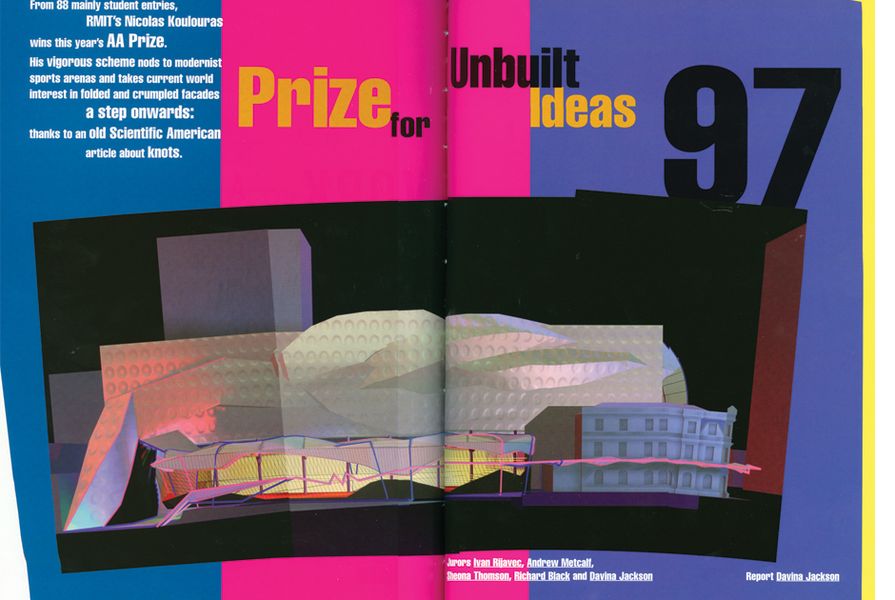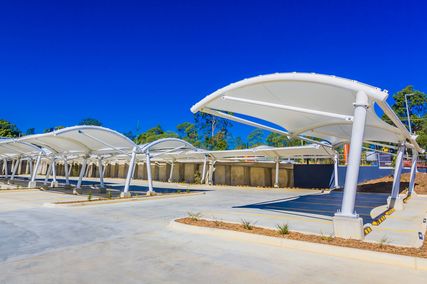A theory of knots, published by Scientific American as a cover essay in July 1979, inspired this year’s AA Prize-winning scheme by Nicolas Koulouras, a senior architecture student at RMIT. Prepared during an upper-level studio led by Paul Minifie and Neil Appleton, this proposal explores an option for a real RMIT commission (now in the hands of Carey Lyon and Perrott Lyon Mathieson): the Cititech building, opposite Building 8 on Swanston Street. Koulouras’ contorted concept for this 10-ish storey sports and information technology centre (computer lab, offices, lecture theatres, three basketball courts, carpark) is also triggered by a Rem Koolhaas comment in S, M, L, XL: “imagine a room where floor becomes wall becomes ceiling, becomes wall and floor again … the room loops the loop.” As well, he is concerned with topology (considering properties of a space that remain unchanged when the space is deformed). Here, Koulouras combines methods of knot-making with aspects of the modernist tradition of buildings for public assemblies and sport. Quotations include buildings by Hugh Banahan of Bates Smart McCutcheon, Clement Meadmore, Alvar Aalto, Eero Saarinen, Yuncken Freeman and the Communist party of Czechoslovakia, which commandeered Mies van der Rohe’s Brno house for a gymnasium-and painted the white vinyl floor red. Mies is said to have liked it.
Jury Summary
Knot building generated vigorous debate. Some jurors considered it both half-cooked in practical terms (“the plan and envelope are non-connected”, “the programme has been knotted”) and burningly over-heated in its aesthetics (“it looks anguished and awkward”). However, it was agreed that the scheme is an audacious, exploratory, well-researched and unusually creative attempt to literally tie up architecture’s unravelled strands of theory at the end of the millennium. As CAD, virtual reality and manufacturing technologies become more sophisticated, architecture’s reliance on cubic geometry seems, to some, questionable and unimaginative. Stand by for more techno-Baroque scenarios from CAD-literate architects aiming to reconnect the planet’s histories and future.
Entries to the 2021 AA Prize for Unbuilt Work can be made via its website until 21 August 2020.
Winners will be announced in the January/February 2021 issue of Architecture Australia and on ArchitectureAU.com.
















